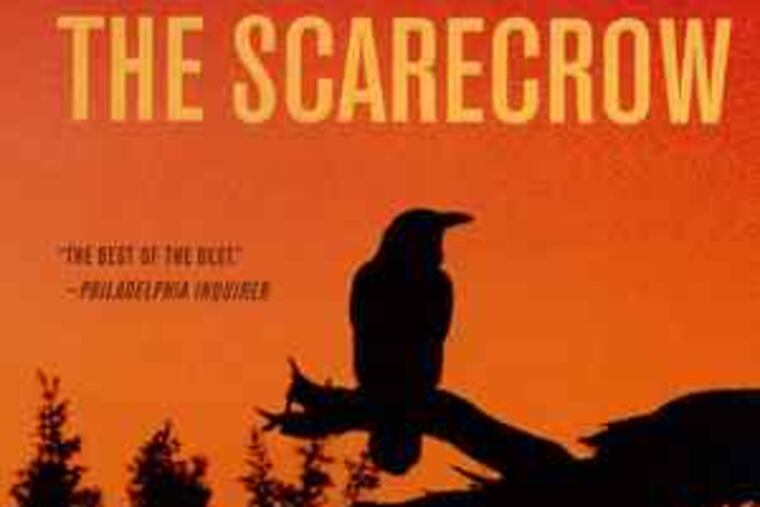Murder and the struggling press
Reporter Jack McEvoy, fired, sets out to write a story that will be the "tombstone on my career."

By Michael Connelly
Little, Brown. 419 pp. $27.99 nolead ends nolead begins
Reviewed by David W. Marston
Good news for Michael Connelly fans: Jack is back.
The reporter-hero of Connelly's classic cop thriller The Poet, Jack McEvoy has had a tough decade since that big success.
Oh, he wrote a best seller about that case, which made him a little bit famous, and he went big-time, moving from the spunky (now defunct) Rocky Mountain News to a lucrative deal with the renowned L.A. Times.
But McEvoy also lost his mojo, twice: His wife divorced him, and at the Times, he failed to land a single story above the fold on Page One.
As The Scarecrow opens, McEvoy is drinking too much, but he has an excuse: He just got fired. In the struggling newspaper industry, an overpaid, under-producing cop-shop reporter makes an attractive target, and the Times gave McEvoy his notice earlier that Friday. (For obvious reasons, newspaper layoffs always come on Friday.)
But if McEvoy will train his pretty blond rookie replacement, the Times agrees to pay him for two more weeks. He will - and he will regret it.
So, McEvoy is methodically drowning his demons - the bartender has already made him surrender his car keys before he will pour the next Jameson's over ice - when clarity suddenly intrudes. He whispers to himself: "Death is my beat. I make my living from it. I forge my professional reputation at it."
And in that moment, McEvoy knows exactly what he is going to do during his final two weeks at the Times. He is going to write the murder story that will make them remember him after he is gone, "the tombstone on my career."
Michael Connelly aficionados will instantly recognize McEvoy's boozy mantra as the first three sentences from The Poet. But any assumption that The Scarecrow picks up where The Poet left off would be mistaken. In fact, The Scarecrow is essentially two books woven together: a bittersweet ode to the bygone world of newspaper journalism, disguised as a serial murder mystery.
Ex-journalist Connelly, author of 19 other memorable mystery novels, keeps the reader riveted to both books.
Like Silence of the Lambs author Thomas Harris, Connelly recognizes that a truly chilling thriller starts with a stone-cold killer. He's no Hannibal Lecter, but Connelly's sinister computer genius, Wesley Carver, has discovered the secret to near-omniscience, and uses it to select his female torture victims.
In a world of nonstop texting and Twittering, blogging and networking, the billions of bytes pinging around cyberspace hold the most intimate details of everyone's life - for anyone who knows how to collect and connect them. Carver knows how.
Carver's cover business is an elaborate "farm" of electronic data equipment, providing commercial backup storage for legitimate companies. As chief technical engineer, his job is to protect the farm from hackers, viruses, and other pests - thus, the "scarecrow."
But Carver's real obsession is sucking up all those revealing bytes from cyberspace, mining their secrets. His computers surveil and hack, search and destroy, able to expose all e-mail, phone, and financial data - plus the complete Internet surfing history - of any person on the planet.
By the time McEvoy discovers that his final Times murder story is only one of a series of unspeakable ritual killings, with the "murderer" in each already convicted and jailed, Carver knows he knows, and he already has McEvoy framed in his deadly electronic minefield.
But then FBI agent Rachel Walling unexpectedly appears on the scene. Walling, fresh from FBI exile for helping McEvoy nail the Poet, is again at his side. And, occasionally, in his bed. But their relationship is complicated, and they are sometimes-paranoid partners. Still, having FBI resources evens the odds for McEvoy, as he races to identify the serial killer, trying to stay alive long enough to write his last big Times story.
Newspaper arcana enrich The Scarecrow. McEvoy reports to his "ace" (assistant city editor), and in the newsroom, the aces' desks are all together, flotilla-style, forming "the raft." There are "slugs" (one-word story titles) and "budget lines" (story descriptions that will determine space allotted), and when McEvoy leaves to chase a lead, his ace always asks, "Got dimes?" The question itself is a poignant anachronism, a pre-cell-phone reminder of how radically the news business has changed.
McEvoy is unabashedly old school, but also aware that his time has passed. Sourly surveying today's online editions and blogs, television tie-ins and Twitter updates, McEvoy says "the morning paper might as well be called the 'Daily Afterthought,' everything in it was posted on the Web the night before."
Still, McEvoy, a complicated, unpredictable protagonist, carries the story. His alter ego, Michael Connelly, just adds the intricate plotting and perfect-pitch dialogue that keeps The Scarecrow scary.
Together, they hook the reader early and never let up, delivering a fast read that meets Connelly's high standards.